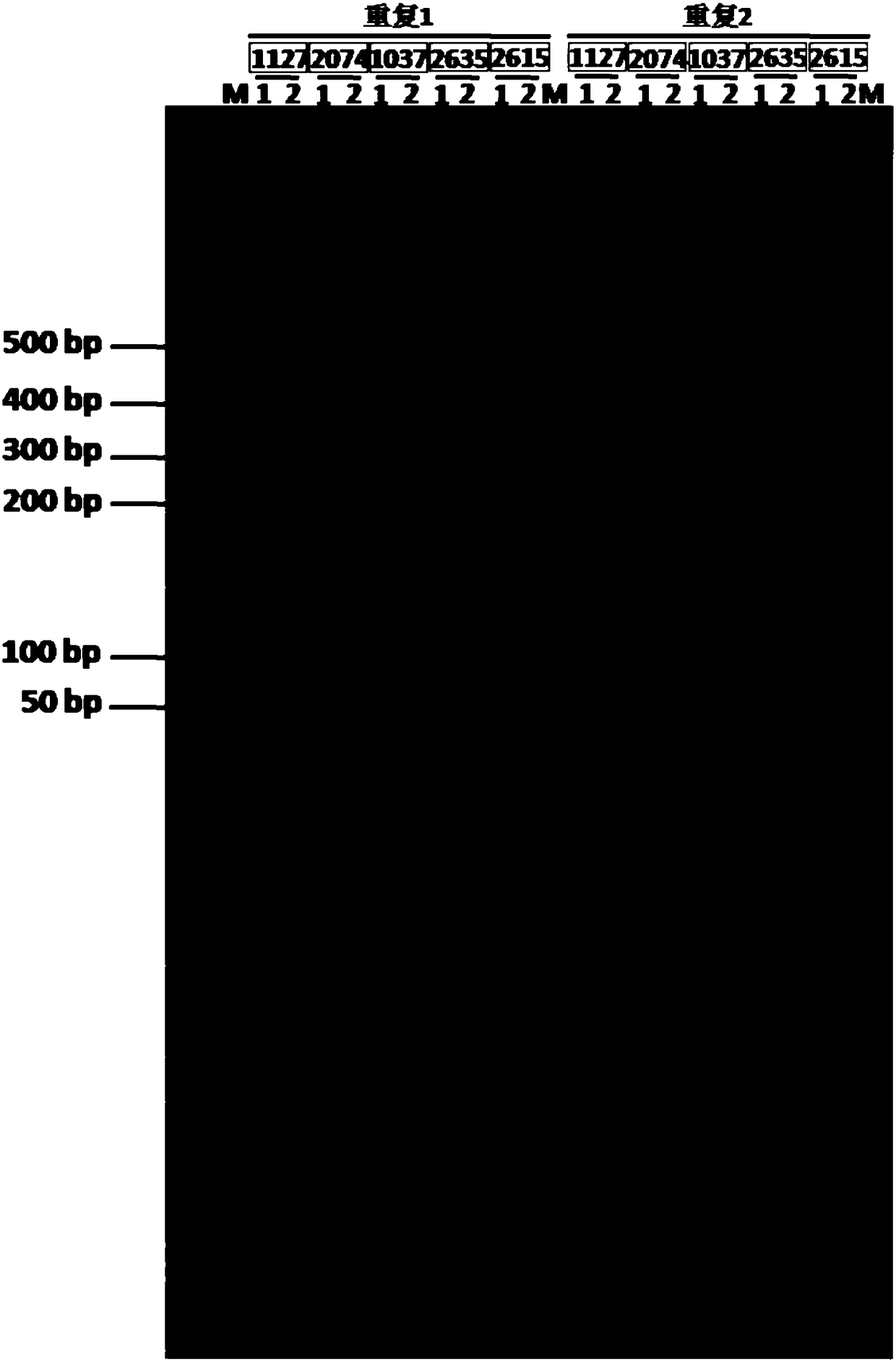Group of SSR molecular markers for identifying corn varieties and application of molecular markers
A molecular marker and molecular marker-assisted technology, applied in the field of crop molecular biology, can solve problems such as low accuracy, heavy workload, and land occupation, and achieve the effects of convenient operation, improved efficiency, and cost savings
- Summary
- Abstract
- Description
- Claims
- Application Information
AI Technical Summary
Problems solved by technology
Method used
Image
Examples
Embodiment 1
[0028] Example 1 Determination of corn SSR molecular markers and primers
[0029] 36 maize varieties were selected for SSR primer screening. Use denaturing polyacrylamide gel electrophoresis to select amplified sites, clear band patterns, and high polymorphisms from 987 pairs of SSR primers (https: / / ftp.maizegdb.org / MaizeGDB / FTP / SSRs / ) 50 pairs of primers are available. Using DNA of Heyu 187 and Denghai 18 as templates, 50 pairs of optional primers were used for PCR amplification. According to the results of polyacrylamide gel electrophoresis, the primers with significant differences in the amplified fragments of Heyu 187 and Denghai 18 were screened out.
[0030] Table 1. A set of primer combinations used to identify maize varieties
[0031]
Embodiment 2
[0032] Example 2 Utilize the SSR molecular marker provided by the present invention to distinguish maize varieties
[0033] (1) Rapid extraction of DNA
[0034] DNA was extracted from maize seeds by alkaline boiling method. This method is quick and easy to operate, has no toxic and harmful reagents, is suitable for DNA preparation in the field of plant molecular biology, and is of great significance for greatly shortening the time of seed purity inspection and transgenic detection, improving detection efficiency, and reducing detection costs. The specific operation steps are as follows: take several corn seeds and place them in a 1.5mL centrifuge tube; add 400 μL NaOH (1M) to the centrifuge tube to ensure that the seeds are completely soaked, and bathe in boiling water for 5 min; add 200 μL Tris-HCl ( 1M, pH 8.0), in a boiling water bath for 1 min; add 200 μL TE buffer (pH 8.0), fully dissolve and set aside.
[0035] (2) Quality and quantity of DNA samples
PUM
 Login to View More
Login to View More Abstract
Description
Claims
Application Information
 Login to View More
Login to View More - R&D
- Intellectual Property
- Life Sciences
- Materials
- Tech Scout
- Unparalleled Data Quality
- Higher Quality Content
- 60% Fewer Hallucinations
Browse by: Latest US Patents, China's latest patents, Technical Efficacy Thesaurus, Application Domain, Technology Topic, Popular Technical Reports.
© 2025 PatSnap. All rights reserved.Legal|Privacy policy|Modern Slavery Act Transparency Statement|Sitemap|About US| Contact US: help@patsnap.com


